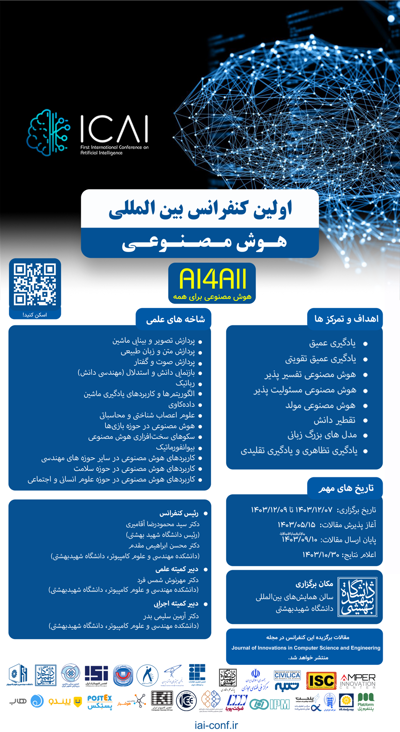0% Complete

نویسندگان :
کلمات کلیدی :
چکیده :
لیست مقالات بایگانی شده
Fateme Darkhal - Seyyed Ali Zendehbad - Zahra Sedaghat
Atefe Aghaei - Mohsen Ebrahimi Moghaddam
Mahdie Azizi hashjin - Mahsa Yaghoobi - Babak Nouri-Moghaddam
Sajedeh Farahbod - Masoud Tohidfar
Khadejeh Nemati - Safouro Ashoori - Moohamad hadi Amini
Mohammad Shojaeinia - Hamid Moghaddasi
Mohammad Mahdi HajiRamezanAli - Hasan Deldar - Mohammad Mehdi Homayounpour
Zinat Zarandi - Amirreza Behmanesh - Mohammad Medhi Ebadzadeh - Thierry Pozzo
Morteza Nalbandi - Athena Abdi
Mahdi Asghari - Alireza Talebpour - Ghasem Darzi

